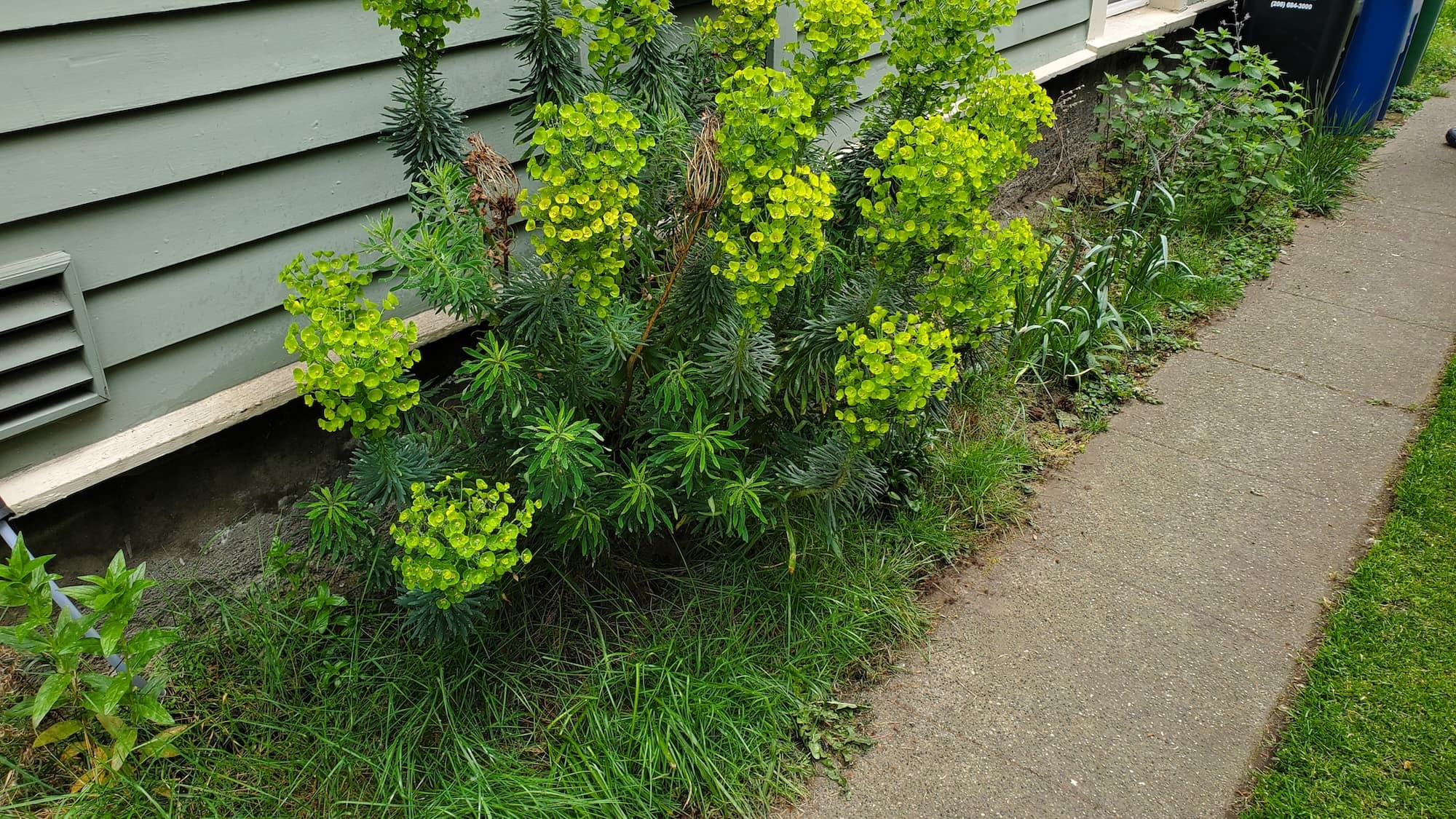West Seattle Honeysuckle vine removal
Homeowner’s Issue
Honeysuckle thrives in West Seattle’s mild, wet winters and warm, dryish summers. On bluff edges by Alki, in shady lots around Schmitz Preserve, and on slopes near Fauntleroy, those vines climb fences, smother natives, and pull mulch into gutters. Soils here vary from sandy loam near the beach to compacted glacial till and clay pockets uphill; that mix hides roots and encourages resprouting unless you pull correctly. Heavy winter rains push cut stems into drains and gullies, while summer watering restrictions and drought windows make re-establishing native plants tricky unless timed right.
Homeowners often notice twiggy growth in late spring, rampant runners in summer, and new shoots the following year where roots remained. Many West Seattle yards also host English ivy and Himalayan blackberry, which complicate removal because vines interlace in the canopy and on retaining walls. HOA sightlines on California Ave and curb appeal around the Junction make visible regrowth a real problem. Sustainable removal here isn’t a one-and-done: it’s careful cutting, root excavation, and staged follow-ups timed to Seattle’s seasons so you don’t trade honeysuckle for a muddy patch or a rebound thicket.
Our Quality Service
We remove honeysuckle mechanically — no herbicides. We cut, pull, dig, and smother using hand tools, saws, mattocks, tarps, and biodegradable mulches when needed. For heavy climbing vines we work from the ground and ladders only; for large canopy work we coordinate with certified arborists when tree safety is a concern. Typical small-yard jobs take 2–4 hours; medium lots half a day; larger properties or slope work are quoted by the day with follow-up visits scheduled.
We time work around West Seattle rainfall patterns: major clearing in late spring or early fall, and follow-ups in the first two growing seasons to catch resprouts. We handle hauling to green waste or composting where accepted, and we recommend native replacements (Oregon grape, sword fern, red-flowering currant) suited to the neighborhood microclimate. The result: safer structures, better curb appeal on hills and streetscapes, and lower maintenance going forward.
What’s Included
- Site assessment and written estimate.
- Cutting vines at base and removing runners from fences, trees, and ground.
- Root excavation for visible root crowns and major runners.
- Cleanup: raking, bagging, and hauling to green waste or staging for compost.
- Final sweep of the site and safe disposal of debris.
Options / Upgrades:
- Mulch + landscape fabric or biodegradable groundcover for temporary smothering.
- Organic, manual weed control and repeat hand-weeding visits (no herbicides).
- Native replanting packages (small shrubs, ferns, and groundcovers).
- Haul-away vs. green-bin staging (we’ll follow Seattle Public Utilities rules).
Before & After / Expectations
Expect noise from saws and chopping; expect dirt and some surface roots pulled from soil. Access matters: leave a gate clear and parking nearby helps keep the job efficient. We’ll flag or protect desirable plants and trees; if vines are in tree canopies the work may require a second visit with an arborist.
Post-removal, regrowth typically appears in the first spring and again the following season. Plan on 1–3 follow-up checks in year one and seasonal monitoring for year two. Best replant windows are fall and early spring in West Seattle; water new natives in summer within local watering guidelines to establish roots. Moss and ivy in shady lots are common — we remove what’s necessary but recommend incremental changes to avoid erosion on steep slopes.
FAQs
Do you use herbicides?
No. We use mechanical removal, digging, smothering, and replanting with natives — sustainable methods only.How long until the vines stop coming back?
Significant reduction after root excavation and 1–2 seasons of follow-up. Complete eradication may take repeat visits for established infestations.Will you damage my trees or fences?
We protect structures and avoid unnecessary cutting. If vines have girdled a tree or are high in the canopy, we’ll discuss safe arborist support.Do I need a permit?
Most residential vine removal in West Seattle doesn’t need a permit. If work affects critical slopes or public right-of-way, we’ll flag permit needs during the assessment.When is best time to remove and replant?
Late spring or early fall for removal, with replanting in fall or early spring to take advantage of Seattle’s rainy season.
Call to Action
If honeysuckle is taking over your West Seattle yard — whether near Lincoln Park, the Junction, or down by Alki — we’ll give you a clear plan and realistic timeline. Free photo estimates and quick scheduling for neighborhood jobs. Trust local experience, practical methods, and sustainable cleanup.
Email: neatandtidyseattle@gmail.com
Phone: 206-538-9344
Book a free estimate and we’ll walk the property, mark priorities, and get the vines out without chemicals.










